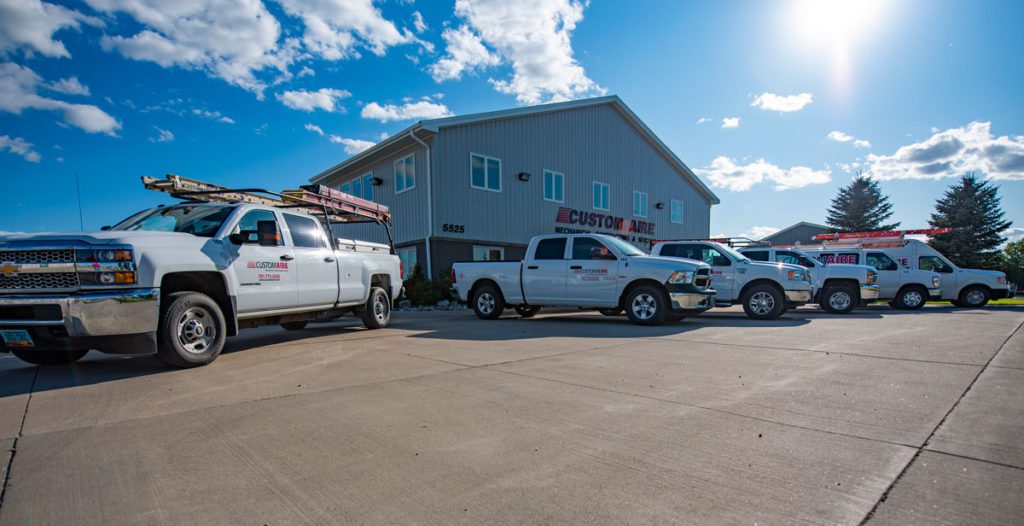Paying to heat a commercial space is a significant part of a business’s budget. If you’re an owner or facility manager, you know the positive impact that improved efficiency can have on the life of your systems, your utility costs, and ultimately your bottom line. When looking for ways to increase efficiency while decreasing heating bills, one factor to consider is your system’s exhaust and ventilation.
Energy Efficiency
Buildings over the last couple of decades have been built to certain standards of airtightness for the sake of energy efficiency. While this is optimal for keeping warm or cool air in, it also means that such buildings are not as well ventilated as their older counterparts, leading to a buildup of stale air and excessive humidity.
In standard systems, when exhaust is being ventilated out of a building, this process helps to eliminate some of these issues by expelling pollutants and excess moisture. However, during this process the exhaust also takes warm air from inside your building with it. A great way to remedy this and help lower energy costs is to recapture that otherwise lost heat with a heat recovery ventilation (HRV) unit. Like traditional systems, HRVs remove the particulates and moisture that you don’t want, while retaining much of the heat for improved efficiency.

How the Heat Recovery Ventilation Unit Works
A heat recovery ventilation unit consists of airflow inlet and outlet ducts, a heat exchanger, and blowers. When warm air from inside leaves through the vent, the heat is captured in the heat exchanger, while the dust, moisture, and germs are filtered out through the exhaust vent. Then, as the fresh, cool outside air comes through the inlet, it passes the heat exchanger and picks up the recycled heat before being distributed throughout your building.

Frequently Asked Questions About HRVs
If you’re new to heat recovery ventilation units, here are some answers to frequently asked questions.
I want to upgrade my heat insulation but I’m worried clean air won’t circulate. Can an HRV help with that?
One of the benefits of having a heat recovery ventilation unit is that you don’t have to sacrifice good air quality for thermal efficiency. Likewise, you don’t have to pay larger energy bills to get the heat you want, only to let it escape with the stale air.
If you’ve been considering upgrading to a more airtight space or improving your current building’s heat insulation, but have been hesitant because of concerns about potentially compromising your air quality, the HRV unit is a practical solution.
Can a heat recovery ventilation unit replace my standard boiler or furnace?
An HRV unit doesn’t take the place of a standard heating system. Rather, it works with the heating system to make the most of your building’s heat. These units can be used in conjunction with water-heating systems as well.
How much space will I need for my HRV?
Heat recovery ventilation units typically reside in the main plant room of a commercial building. HRV units vary in size depending on how big the overall space is that you’re trying to affect.
Does an HRV unit benefit the environment?
The impact on the environment is greatly improved with the use of a heat recovery ventilation unit. Nearly 95% of the heat already generated by your HVAC system can be ventilated, so it stays indoors.
Is a heat recovery ventilation unit effective in a cold winter climate?
HRV units are particularly efficient in extreme climates, where outside temperatures are significantly different from inside temperatures during winter or summer. In our region of the Red River Valley, a heat recovery ventilation unit can make a big difference in energy savings by reclaiming much of the heat you’ve already paid for.

Professional Expertise
At Custom Aire, our team of certified experts can help you find the best HRV unit for your space, with the features you need, from humidity control to freeze prevention to allergy mitigation. Custom Aire has the knowledge and experience to install these units in commercial buildings of every size.
If you’re looking to improve your commercial space’s energy efficiency or make it more environmentally friendly, contact us to learn more about how a heat recovery ventilation unit can meet your goals and benefit your business.





